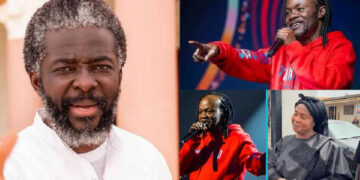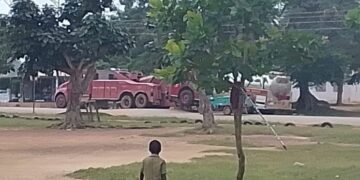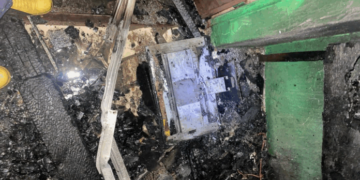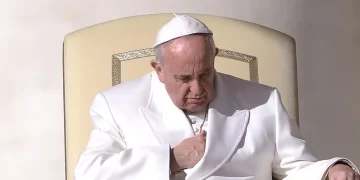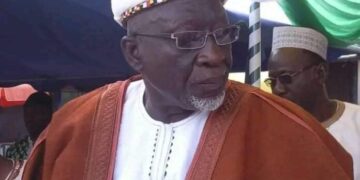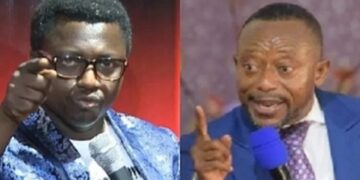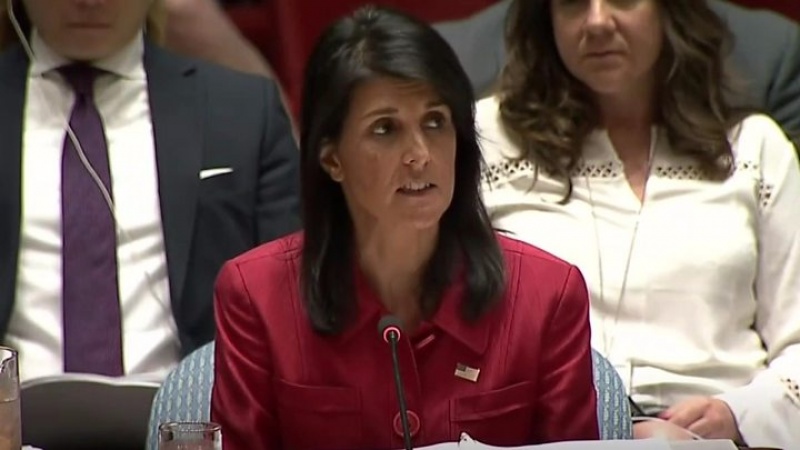
The US has said it will use its “considerable military forces” on North Korea “if we must”, following Tuesday’s long-range missile test.
US ambassador Nikki Haley said a new resolution would also be tabled against Pyongyang at the United Nations.
She described the test as a sharp military escalation and also threatened to use trade restrictions.
Hours after she spoke, the US and South Korea fired more missiles into the Sea of Japan as part of military drills.
But Pyongyang said it would not negotiate unless the US ended its “hostile policy” against North Korea. China and Russia also opposed the use of military force.
Tuesday’s missile launch, the latest in a series of tests, was in defiance of a ban by the UN Security Council.
Meanwhile, US Defence Secretary Jim Mattis and his Japanese counterpart Tomomi Inada said the test was an “unacceptable provocation”.
Gen Mattis said the US was committed to defending Japan and providing deterrence, according to a statement released by the US defence department after their phone call.
What exactly did the US say?
On Wednesday Ms Haley warned North Korea’s test launch of an intercontinental ballistic missile (ICBM) was “quickly closing off the possibility of a diplomatic solution”.
“The United States is prepared to use the full range of our capabilities to defend ourselves, and our allies,” she told an emergency session of the UN Security Council.
“One of our capabilities lies with our considerable military forces. We will use them, if we must, but we prefer not to have to go in that direction.”
On Thursday in South Korea, the US held a joint military drill with the South’s troops for a second day in response to the missile test.
It involved various destroyers, warships and fighter jets launching guided missiles against a simulated maritime attack, Yonhap news agency reports.
Ms Haley also said the US could cut off trade with countries which continued to trade with North Korea in violation of UN resolutions.
“We will look at any country that chooses to do business with this outlaw regime,” she said.
Earlier, US President Donald Trump criticised China for its trade with North Korea.
Mr Trump has arrived in Warsaw where he is due to meet Chinese President Xi Jinping for the second time. He will later travel to Hamburg for the G20 summit, where world leaders are expected to discuss the missile test.
Is the international community united on the issue?
South Korea’s President Moon Jae-in has voiced concern that the North’s nuclear and missile development is “proceeding much faster than expected”.
Speaking in Berlin on Wednesday, where he met German leader Angela Merkel, he said they would “examine possibilities of ramping up sanctions”.
At the UN Security Council meeting in New York, France’s ambassador said it also favoured a new resolution on North Korea to tighten sanctions.
Russia, which condemned the test, said the possibility of using military measures “should be excluded”.
China’s ambassador Liu Jieyi echoed similar sentiments and said “military means must not be an option”.
He repeated China and Russia’s proposal that North Korea should halt its missile and nuclear programmes in exchange for US and South Korean military exercises in the region being frozen. They also propose reversing plans to deploy a controversial anti-missile system in the South.
Both Russia and China are permanent members of the UN Security Council and could veto any new resolution.
What does North Korea itself say?
The “US strategy of strength” combined with pressure and engagement “will never work”, state news agency KCNA said.
Unless the US stopped its “hostile policy”, North Korea would “never put the nuke and ballistic rocket on the negotiating table”.
North Korean leader Kim Jong-un was earlier quoted as saying Tuesday’s launch was a “gift” to the Americans on their independence day, and that he had ordered officials to “frequently send big and small ‘gift packages’ to the Yankees”.
Pyongyang said the Hwasong-14 ICBM had reached an altitude of 2,802km (1,731 miles) and flown 933km for 39 minutes before hitting a target in the sea.
North Korea, it said, was now “a full-fledged nuclear power that has been possessed of the most powerful inter-continental ballistic rocket capable of hitting any part of the world”.
But while experts agree that the test shows Pyongyang has a long-range projectile, many are sceptical that its missiles can successfully deliver warheads.
What is an ICBM?
A long-range missile usually designed to carry a nuclear warhead
The minimum range is 5,500km (3,400 miles), although most fly about 10,000km or more
Pyongyang has previously displayed two types of ICBMs: the KN-08, with a range of 11,500km, and the KN-14, with a range of 10,000km, but before 4 July had not claimed to have flight tested an ICBM. It is not clear what differentiates the Hwasong-14
Source: BBC



